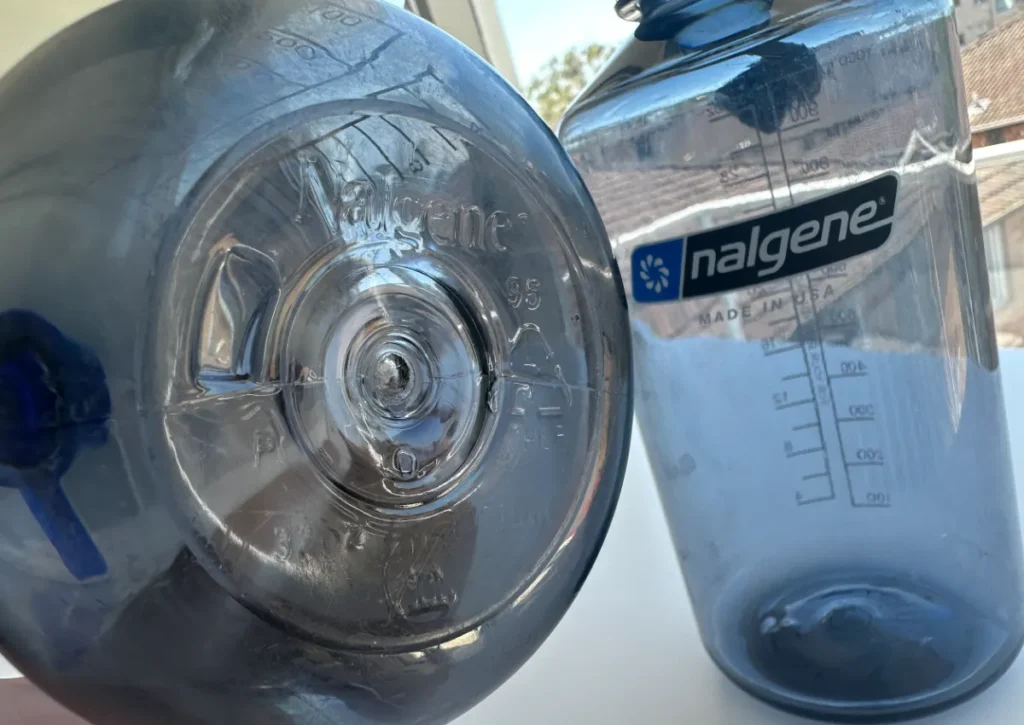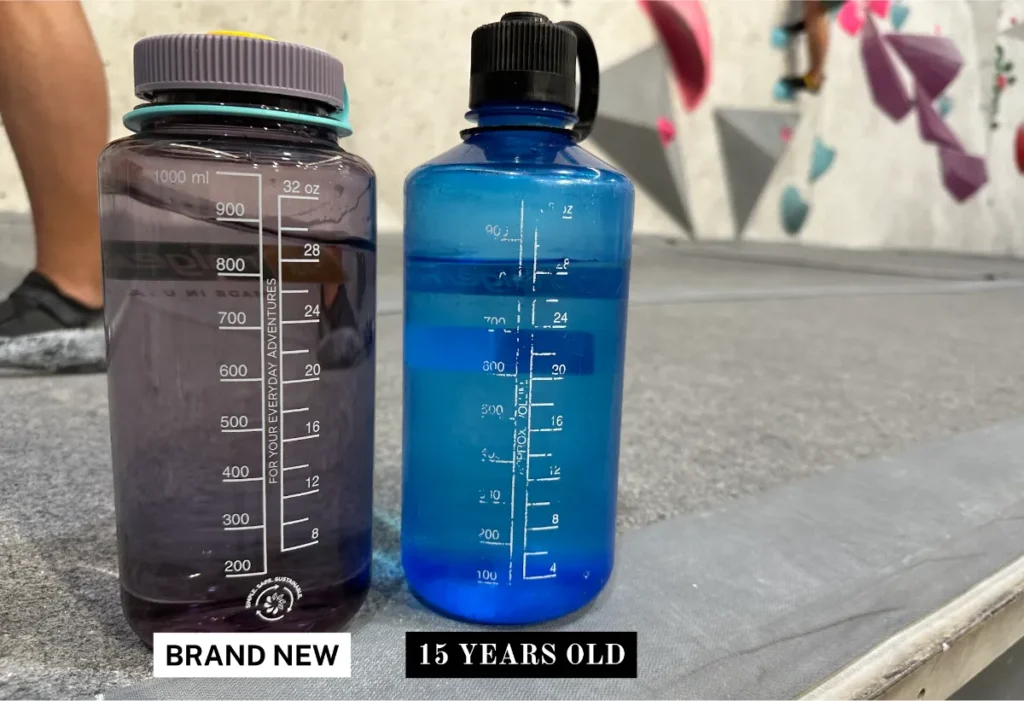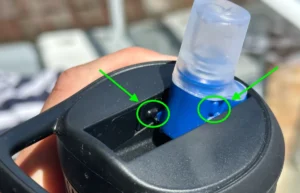I recently stumbled across one of my older Nalgene Bottles stuffed in the bottom of a box in my attic.
I was stoked. I hadn’t seen the OG Nalgene logo in years.
I brought it down, washed it out, and was going to fill it when it occurred to me that I wasn’t entirely sure how old this bottle actually was and what exactly it was made of.
After all, I like to know what I’m putting in my body (it doesn’t always stop me, but still).
Old Nalgene Bottles, made before 2008, are made of polycarbonate — a hard, transparent, and very durable plastic. Because polycarbonate contains BPA, Nalgene switched over to Tritan Plastic for all of their bottles made after 2008. The best way to tell if your bottle is made of polycarbonate or Tritan is to look for a BPA-free stamp on the bottom of the bottle.
As it turned out, this bottle was an older polycarbonate bottle (the old logo is a dead giveaway).
Even though old polycarbonate bottles contain BPA, I still use them occasionally. I’m just sure to only drink cold water from them and not let the water sit for too long to make it as safe as possible.
What Are Old Nalgene Bottles Made Of?

The original hard, transparent Nalgene Bottles were made of polycarbonate plastic (opaque white Ultralite Bottles have always been made of HDPE).
It seemed to be the perfect material for a reusable bottle. It’s crystal clear, can handle boiling water, and is more durable than plastic has any right to be.
Unfortunately, a big part of the reason it was so durable was thanks to a chemical compound in the plastic called bisphenol A (more commonly known as BPA) that helps make plastics more resistant to shattering.
When the dangers associated with BPA became apparent in 2008, Nalgene Bottles were at the forefront of the controversy because they were by far the most well known and widely used bottles.
Nalgene immediately pulled all of their polycarbonate bottles from shelves until they could find a suitable BPA-free replacement.
Nalgene soon introduced bottles made of Eastman Chemical’s new Tritan Plastic that shared all of the same benefits of polycarbonate, just without the BPA.
The new Tritan Nalgenes were a success and, aside from a BPA-free stamp on the bottom of the bottle, are indistinguishable from their original bottles.
Tritan Nalgenes were the standard until 2020, when Nalgene unveiled a new main line of bottles, Nalgene Sustain made of Tritan Renew — a plastic identical to Tritan, except that it’s made of up to 50% certified recycled materials.
How To Tell If You Have An Original Nalgene Bottle
The easiest and most reliable way to tell if you have an Original or Tritan Nalgene Bottle is to look for a BPA-free stamp on the bottom of the bottle.
A stamp means Tritan. No stamp means polycarbonate.

If the markings on the bottom of your bottle have worn down over the years, you can instead use the logo as a clue — but it’s not completely foolproof.

If your bottle has the original logo (pictured on the left), it’s 100% an original polycarbonate bottle.
If your bottle has the updated logo however (pictured on the right), it could either be Tritan or polycarbonate.
Nalgene swapped to their current logo in 2003. So polycarbonate bottles made between 2003 and 2008 and all Tritan Bottles both sport the new logo.
If your Nalgene has the new Nalgene Sustain logo, it’s made of Tritan Renew and was produced sometime after 2020.




